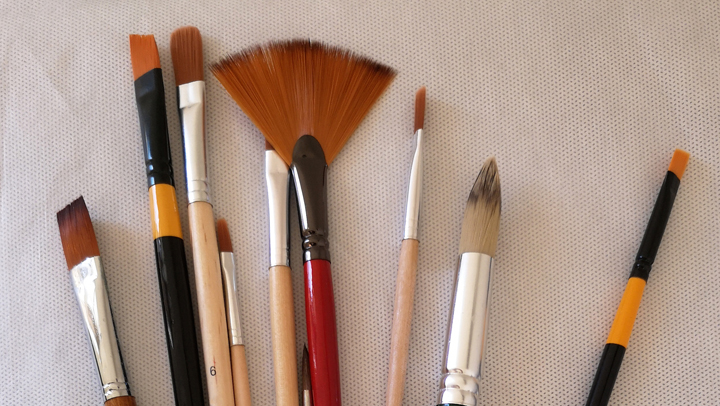As an artist, your paintbrush is your most important tool. Which brush you use and how you use it will have a huge effect on your artwork.
But there are all sorts of paintbrushes out there to choose between. If you’ve ever gazed at all the different paintbrush options online or in the store, you’ll know this.
Paintbrushes differ in their shape, materials, quality, with a variety of sizes. You can use each type of brushes to create distinctive marks, strokes, lines, and textures.
Knowing which paintbrush to pick up will make your life easier as an artist. It will broaden the possibilities of what you create and ensure you get your desired effect.
But it doesn’t have to be overwhelming or scary.
This guide will walk you through the main types of brushes so you know where to start. By the end of it, you’ll be able to tell your filbert from your Egbert. You’ll know when to pick up a round brush vs. a fan brush. And your artwork will be even better as a result!
So let’s dive into the beautiful world of paint brushes – what they are and when to use them.
The Parts of Artist Paint Brushes
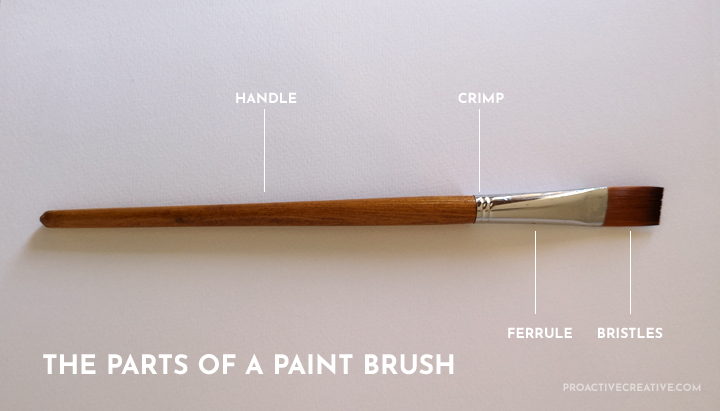
(Image credit: Proactive Creative)
First of all, it’s important to know the proper names for each part of the paintbrush.
Starting at the top, you have the bristles. This is the section you’ll apply paint to and paint on your paper or canvas. Another name for the bristles is hairs, and they’re made from a range of materials.
You can see that there are a lot of possible variations, natural bristle or synthetic one, soft or stiff.
Next, you have the ferrule – the section the bristles are attached to. The ferrule connects the bristles and the paintbrush handle and is often made of metal.
The crimp is where the ferrule meets the brush handle. And finally, you have the paintbrush handle itself, made of wood or sometimes acrylic. That’s what you’ll hold while you perform your magic as you paint!
11 Different Types of Paint Brushes Explained
Now you’re clear on the anatomy of the paintbrush, let’s look at each common type of paint brush.
Round Brush
In round paintbrushes, both the handle and the bristles are rounded (hence the name). When holding a round paintbrush, it feels like a pencil and fits nicely in your hand.
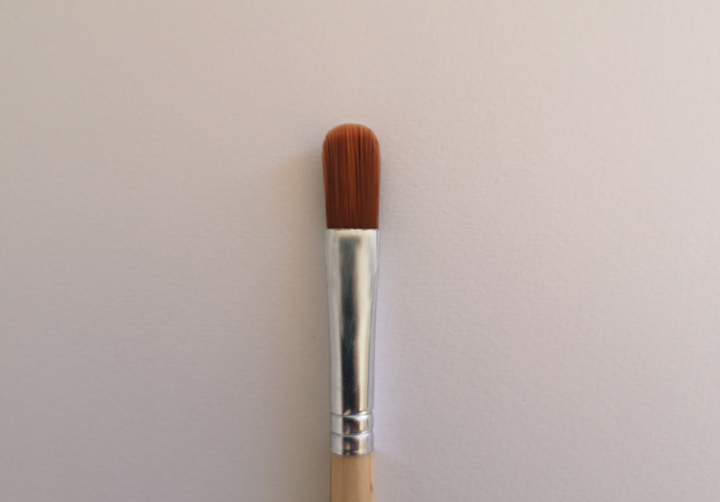
(Image credit: Proactive Creative)
As a result, round paintbrushes are excellent when you need more control. You can create intricate artwork using this kind of brush, depending on the size.
Most round paintbrushes tend to be narrow, perfect for making thin lines. You can use them for adding detail over washes of color or for smaller areas where you need accuracy.
Round paintbrushes can have a round or slightly pointed tip. The pointed tip allows for even more precision. That can also come in handy when outlining your painting.
Pointed Round Brush
The pointed round paintbrush is ideal for your most intricate details or fine lines. The handle and tip are circular like a pencil but taper down to a very pointed finish.
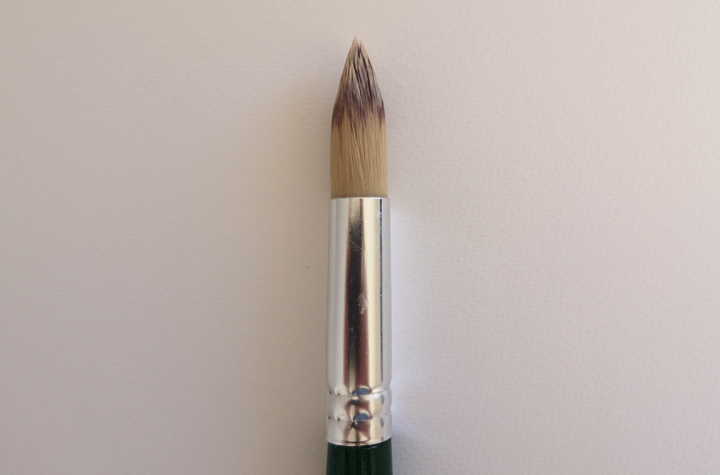
(Image credit: Proactive Creative)
Many artists rely on pointed round brushes for touching up their finished artwork. It provides the precision you need to add or alter tiny details.
With both the round and pointed round brush, you’ll want to use thinner paint. They don’t work well with thick paint.
Flat Brush
The flat artist paint brush is the little brother of the wash brush. It has a similar shape but is smaller, making it more versatile.
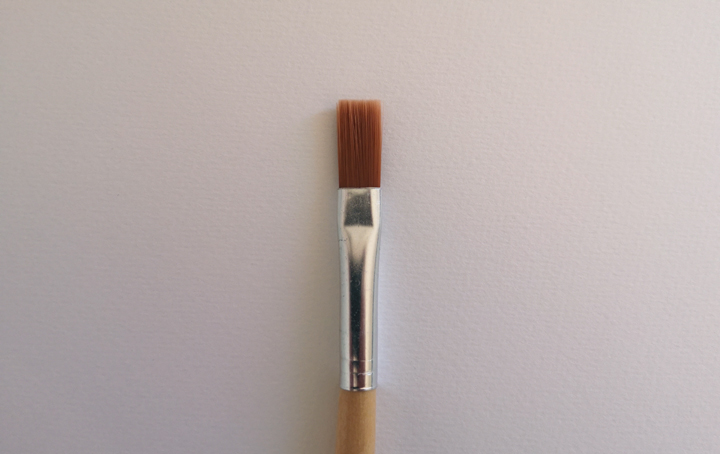
(Image credit: Proactive Creative)
A flat brush looks square, and most tend to have medium or long hairs. It’s perfect when you need to cover a lot of space and more control than a wash brush provides.
You’ll find that flat brushes are easy to maneuver and manipulate. It’s easy to create straight lines, and they apply color smoothly and consistently.
Plus, you can turn them on their side to create fine lines. But they are equally useful for bold, vivid strokes. So, they provide the best of both worlds.
Bright Brush
The bright is an alternative to the flat brush with its unique uses and style.
Compared to flat brushes, the bright paintbrush tends to have shorter hairs. That allows for more control and shorter, less swooping strokes.
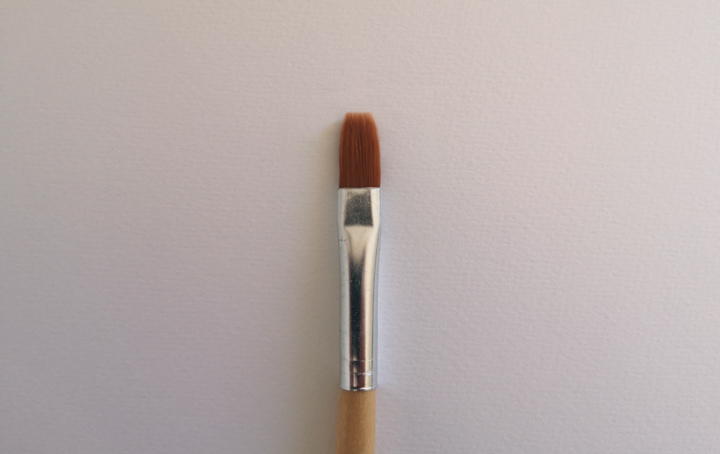
(Image credit: Proactive Creative)
It may have slightly more curved bristles, creating a shape that tapers towards the tip. But you’ll still get those straight lines and clean edges like with a flat brush.
The bright is ideal when working with thick paint or applying heavy color on the page. It’s best to work up close with this kind of paintbrush.
Filbert Brush
The filbert is another long bristled brush, this time with an oval tip. The bristles are arranged to be flat rather than round. It’s like the perfect mix of a round and a flat paintbrush.
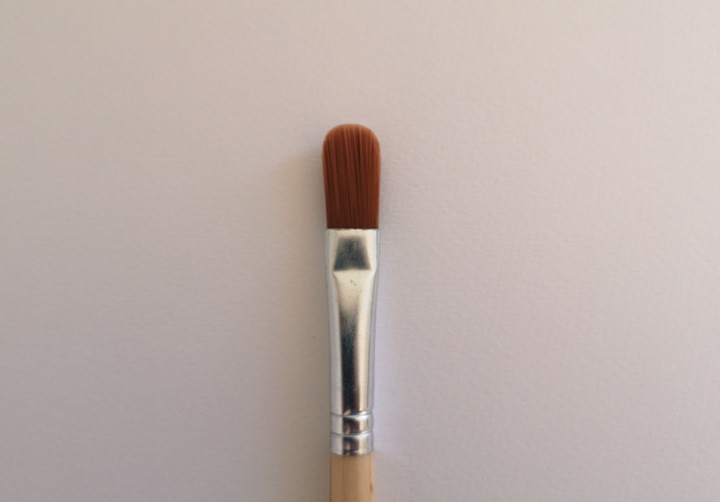
(Image credit: Proactive Creative)
You should definitely have a filbert (or several) in your paint supplies.
It’s one of the more versatile brushes with many different uses. The filbert is popular with abstract painters who don’t work in clean, defined lines.
If you want a solid block of color without clear brush strokes, you can turn the filbert on its side. But it’s just as helpful for creating linear or broad strokes and filling large areas.
You’ll also find the filbert comes in handy when you need to blend areas. The best way to discover all the uses of the filbert brush is to pick one up and have a go!
Egbert Brush
A less common brush, it’s still worth knowing about the Egbert. It looks like a filbert brush but with much longer bristles.
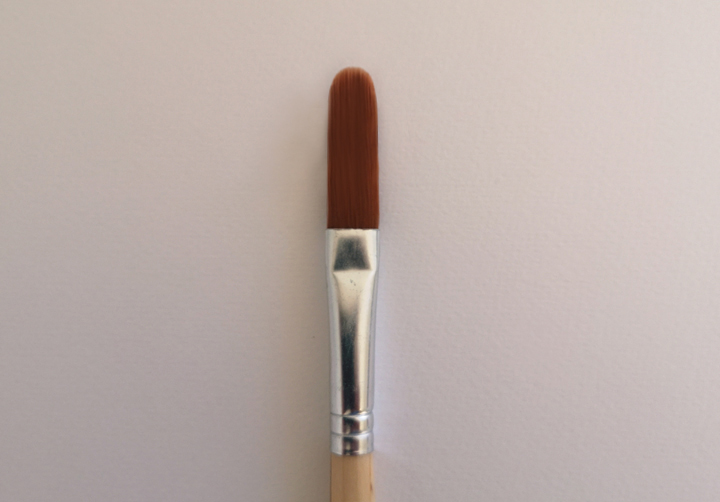
(Image credit: Proactive Creative)
The Egbert was a popular choice of Old Masters and was often used for oil-based paint. Due to the long length of the bristles, this isn’t a brush for precision.
Instead, it’s a great brush when you’re painting expressively. You can use it to capture movement and energy and create a unique look.
These brushes work best with a thin layer of paint rather than thick paint. You can use it to apply washes over large areas. But it’s also very flexible depending on how you hold it and whether you use a light or heavy touch.
It does take some skill to use an Egbert paint brush, but the best way to learn is through practice.
The Egbert is not an essential paintbrush. But it can make a nice addition to your toolbox as you become more confident and skilled.
Angular Flat Brush
Here we have another flat brush. But what differs in this brush is that the bristles are cut at an angle.
The angular flat is your brush when you want to make smooth, curved strokes.
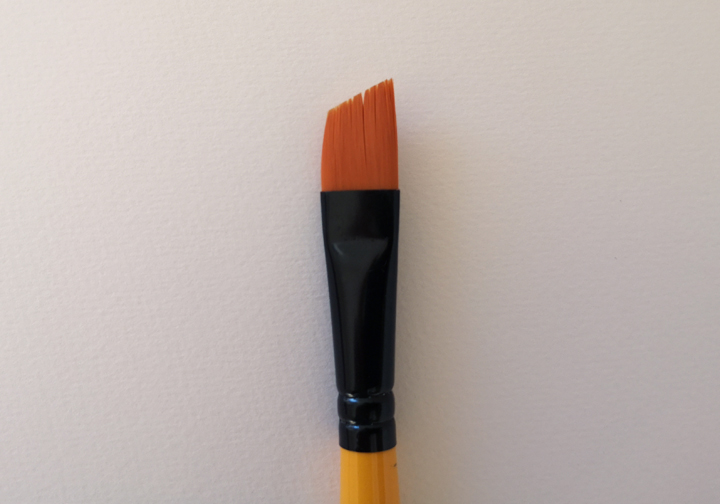
(Image credit: Proactive Creative)
That small tip is perfect when you need to be precise. For example, you can use it to get into finicky corners and for fine details.
But it’s another multipurpose brush that can cover wide areas with large brush strokes. It’s versatile and deserves a spot in your painting toolbox.
Fan Brush
As the name suggests, the bristles of this brush are spread out like a fan. That makes it a unique brush with specific uses.
You won’t use this brush for large areas, but it can come in handy at times. Especially if you want to create some special effects, lines, or dots on your painting.
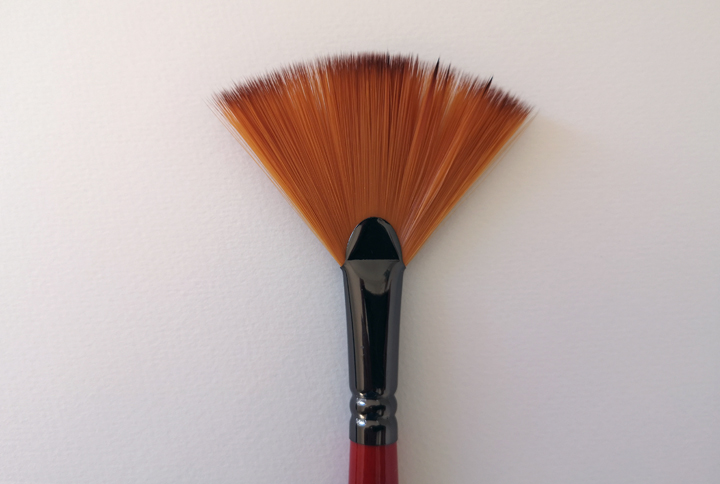
(Image credit: Proactive Creative)
The fan brush is flat, and the bristles end in a rounded curve.
How you use your fan brush can also depend on whether it’s made with synthetic or natural animal hair. That’s because the bristles move differently according to the material used.
If you have a natural fan brush, you can use it to blend different colors. It also comes in handy for feathering effects.
In contrast, synthetic brushes work best if you want to create patterns and textures. Some examples include clouds, leaves, water, trees, pebbles, and grass.
You can use a fan brush with acrylics if you like. But in that case, thin and flimsy fan brushes won’t cut it. You’ll need something more sturdy to stand up to the thicker paint.
Check out this video to see how to use your fan paint brush:
Detail Round Brush
The detail round brush is a variation of the regular round brush. It has a shorter handle, allowing you even more control over the brush. As a result, you should pick this one up for the most intricate sections or tiny details.
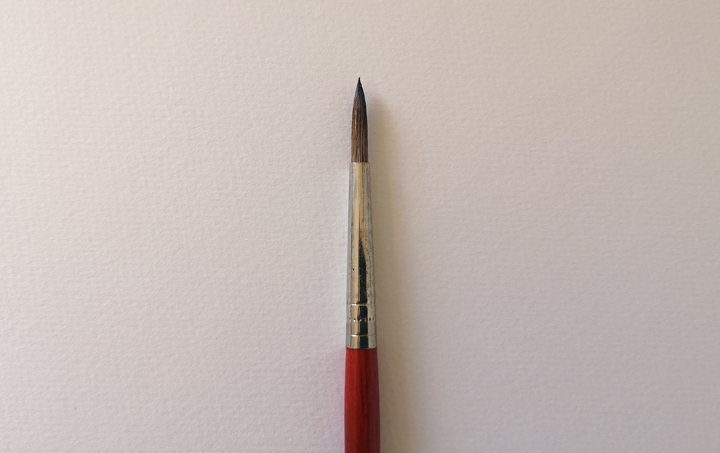
(Image credit: Proactive Creative)
The detailed round is all about control and accuracy. As you can see, it’s no use for thicker lines or washes. But it’s still very handy, so you should definitely invest in one of these brushes!
Wash Brush
You’ll notice the wash brush as it’s the biggest paintbrush of them all. That’s because (as the name hints) it’s designed for large washes.
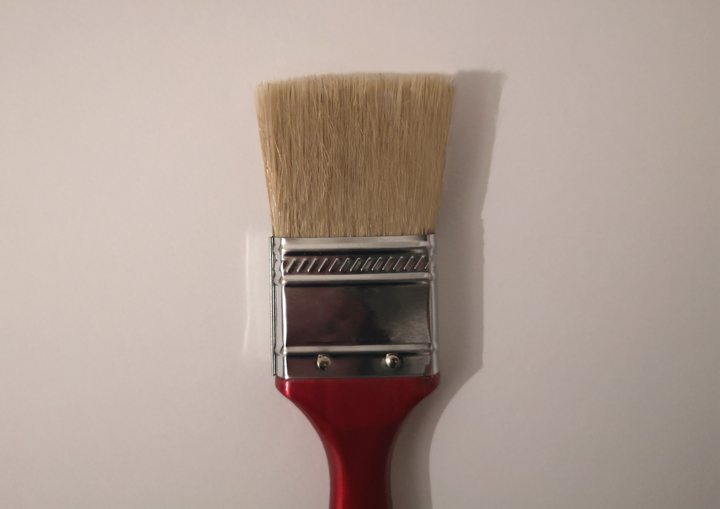
(Image credit: Proactive Creative)
The wash brush is large, with longish bristles and a square tip. You can use it with thick or thin paper to cover huge areas of the canvas at a go.
While it’s most often used for large strokes, you can turn it on its side. Then, it’s possible to use the edge for thinner lines. That can also come in useful if you want straight, clean edges without any flaws.
Liner Brush
If you want an even thinner brush than the detailed round, go for a liner.
Liner brushes are the most pointed, thin brushes out there. They have long natural or synthetic bristles and are made for fine lines and little details.
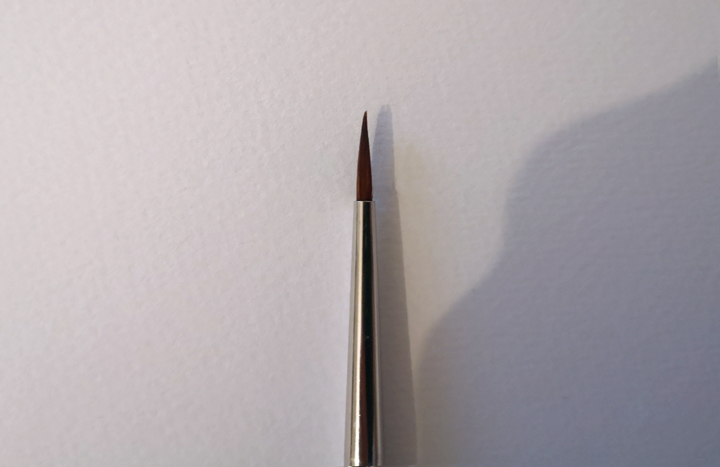
(Image credit: Proactive Creative)
Other names for liners include rigger brushes or sword brushes if the tip is angled.
When you’re working on a painting that calls for intricacy, you’ll be glad to have a liner brush at hand. It’s even possible to create fine lettering with a liner brush.
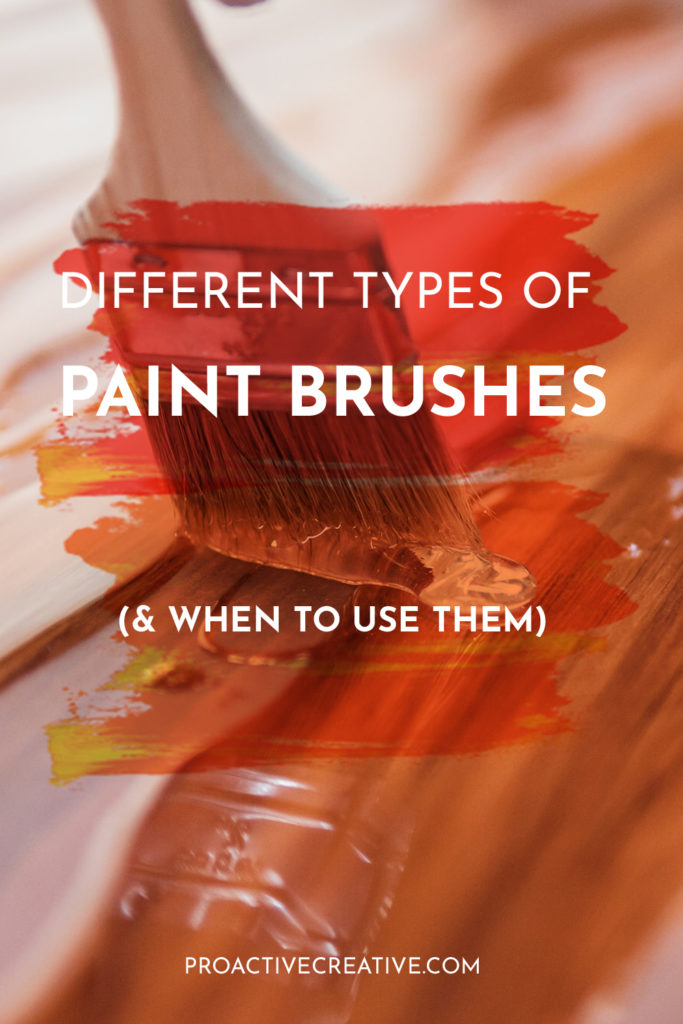
Buying a Paint Brush Set
If you want to get started with a few different paintbrushes, consider buying a set. That way, you’ll get to try out some of the various types.
And by buying a set, you often save money compared to buying each brush on its own.
The best sets will include a variety of different paintbrushes. That way, you can select the best brush for every situation. And you can switch between paintbrushes depending on whether you need a thick or fine line.
Some sets include all the supplies, from paints to brushes and even canvases. These are perfect for beginners or to give as a present. Check out my reviews of the best painting sets for beginners here.
How to Take Care of Your Professional Paint Brushes
Now you know which paintbrushes to use when. Here are some tips for taking the best care of your paintbrushes, so they last a long time:
- When you’re not using your paintbrush, lay it down on the table. Leaving it upright in a cup of water can damage or bend the bristles.
- If you finish with your paintbrush, wash it straight away and lay it flat to dry. Don’t forget to reshape the bristles first, though.
- It’s best to use soap and water to wash your brushes. In most cases, you don’t need harsh chemicals.
- I would recommend just using your watercolor brushes for watercolors. Don’t use the same brush for different mediums. It won’t work so well and will need more maintenance.
- Even with the best care, paintbrushes won’t last forever. Depending on how often you use them, you will probably need to replace them every six months – 1 year. Check over your brushes regularly to see if the bristles look messy, stick out, or come loose. If they do, you’ll know it’s time to invest in new brushes.

The Wrap Up
Now, you’re an expert on artist paintbrushes! You know exactly what each paintbrush is called and when to use it. So, you’ll be able to get the most out of your painting supplies.
Let me know if you have any questions below! And follow me on Pinterest for more creative tips, tutorials, and reviews.
This post contains affiliate links. If you make a purchase, Proactive Creative may receive a small commission at no additional cost to you.

